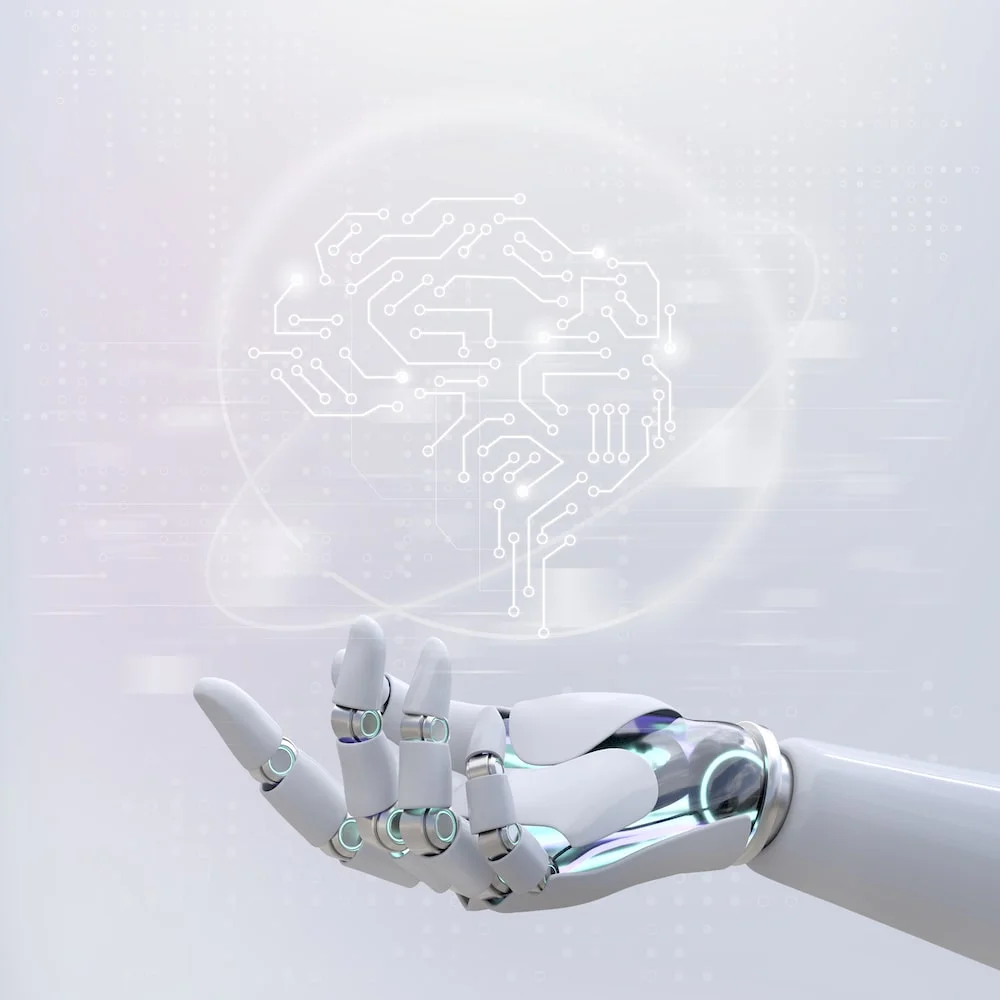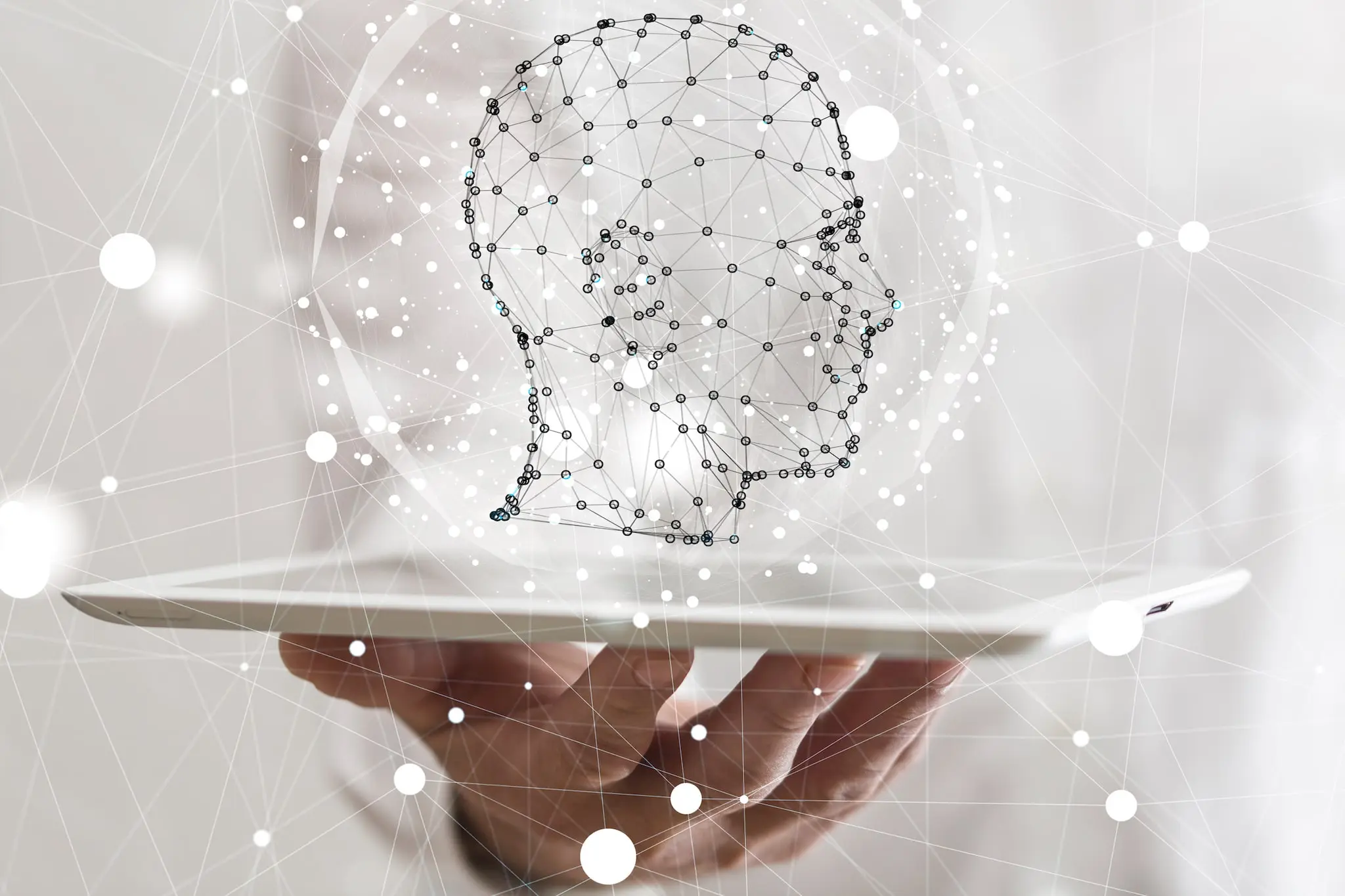Explore how ChatGPT for customer service can alleviate the burden on human agents, reduce costs, and improve the customer experience.
ChatGPT in Customer Service: How to Take Your Customer Experience to a New Level
Since 2011, the world has been defined by the Industry 4.0 era, the era of technology. Businesses worldwide have been implementing various technological advancements to automate and streamline processes. This year’s leading player so far has been AI-powered chatbots. The recent release of GPT-4 has changed how we look at artificial intelligence. What seemed to be decades away is here: a system capable of human-like interactions. Using ChatGPT, businesses can optimize multiple processes, including their client service. In this article, we will focus on the use cases and benefits of chatbots in customer service.

AI chip intelligence technology Image by rawpixel.com on Freepik
7 Key Benefits of AI in Customer Service
Since its inception in the 1950s, AI has revolutionized a wide range of industries. One of the common use cases is client support. In this part, we will divulge the critical benefits of AI customer service for businesses.
1. Cost Efficiency
Implementing service bots into the customer support system aims to facilitate automation. Delegating repetitive tasks to a chatbot can alleviate some workloads and increase productivity. For example, an AI bot can manage routine tasks like answering typical questions. Additionally, the technology can execute after-sales follow-ups while agents handle more complex cases.
The more your chatbot interacts with web visitors, the better it will deal with the daily routine. You can further refine the algorithm by feeding the bot with customer interaction data. As a matter of fact, these AI helpers can save your business up to 30% in customer support expenses.
2. Flexibility in Response to Changing Conditions
In the ever-changing world, having access to the latest knowledge can be a significant business advantage. AI for websites is capable of continuous web scraping in search of relevant information. For example, it can collect the latest data pertaining to your industry and customer base. Big Data and data analytics are also important players. Combining these technologies allows you to compile key market trends to make informed decisions. These insights will grant you a significant competitive edge and allow you to understand your users better.
3. Optimization of Average Handling Time (AHT)
AHT comprises three vital elements: call time, hold time, and follow-up tasks time. Every client support department strives to reduce these metrics. However, it’s imperative to uphold an appropriate level of service quality. Since AI for customer experience can instantly process natural language, it can resolve issues in no time. Companies can leverage an AI system to handle thousands of user requests. As a matter of fact, bots can process queries a lot faster than any human being. As a consequence, you can enhance the customer experience and deliver consistent help.
4. Proactive Customer Support
Traditional customer services provide reactive responses to user issues. The AI capabilities help companies pivot to proactive support. The conventional way of handling inquiries is to solve the existing problem. However, AI enables us to predict a potential obstacle before it occurs. For example, your service bot can track users’ actions and alert you when they face difficulty. AI-powered services can also prioritize cases, compare previous interactions, and identify patterns.
Additionally, by utilizing Big Data technologies, you can apply complex data analysis to learn more about customer interactions. You can improve client service by gaining actionable insights and detecting possible problems. Also, AI systems can offer recommendations to enhance procedures.
5. 24/7 Availability
AI bot support can not only provide better assistance to customers. In addition, it can alleviate the burden on your agents. Customer service requires employees to always be in a good mood, even after hours of non-stop work. These working conditions can often lead to burnout, inevitably decreasing service quality. In contrast, AI-driven systems can deliver high performance around the clock. In the meantime, human agents will have more time to focus on complex issues.
6. Consistency in Providing Support
AI-powered chatbots can offer immediate support across channels. In the past, customers had to look up the company’s website or call a number to receive help. Using bots, they can reach you using social media or messaging apps. For example, you can install a machine-learning chatbot on your Facebook page or connect it to WhatsApp. In addition to that, your business can keep the tone of voice and messaging consistent across platforms. Of course, it can be challenging to ensure that every representative adheres to the same standards. However, chatbots can be programmed to provide uniform support.
Capabilities and Limitations of ChatGPT in Customer Service
The potential of ChatGPT for customer service is yet to be fully discovered and implemented. However, the technology can already enhance customer experience by streamlining specific tasks. In this section, we will investigate the capabilities and limitations of AI for businesses.
Capabilities of ChatGPT
ChatGPT disrupted the market almost immediately upon its launch. Only two months after the system went live, it accumulated 100 million active users. But what makes this AI technology better than its predecessors?
Simply put, ChatGPT is a natural language processing tool that delivers human-like interactions. This NLP chatbot can interpret requests and develop a relevant answer within seconds.
Especially in complex user requests or follow-ups, NLP for customer service can swiftly determine the context and come up with the appropriate answer. Additionally, the system supports many languages, including rare ones. Thus, companies can reach wider audiences by addressing them in their preferred language.
The best aspect of the technology is its ability to learn and improve continuously. Machine learning algorithms can customize the responses as users interact with the AI customer service. Over time, your natural language processing chatbot will be customized to the needs and experiences of your clients. Finally, the system is scalable and can handle an increasing amount of queries. Whether the number of requests is growing or falling, ChatGPT can adjust accordingly.
Limitations of ChatGPT
ChatGPT was trained on data sets from 2021 and cannot replace a search engine. Although the developers will improve it in the future, the system can currently output limited data. These constraints can also lead to erroneous results that need fact-checking.
Another fault is the lack of emotional intelligence and social context awareness. The system is smart enough to grasp the literal meaning of the words and sentences. Yet, it cannot take into account the entirety of the circumstances. For example, ChatGPT for customer service might struggle to fully comprehend humor, emotions, and nonverbal cues.
Additionally, the machine-learning chatbot has trouble generating long-form content. The system can output grammatically correct sentences that loosely cover the suggested topic. At the same time, this bot fails to maintain the structural integrity of the writing. In other words, you can use ChatGPT for summaries or small texts rather than lengthy articles.
How Can Businesses Leverage ChatGPT for Customer Service?
As OpenAI has released an API that allows companies to integrate ChatGPT into their applications, numerous businesses have already adopted the technology. So how do chatbots work to benefit your customers and your company? Let’s examine the practical applications of the model and learn how to leverage the technology.
Managing Customer Dissatisfaction
As a business, you are inevitably destined to face unhappy customers. The most efficient way to deal with their complaints is to handle them immediately. Companies can train ChatGPT for customer service to identify grievances and produce the best response. Sometimes it can be challenging for a human agent to de-escalate the situation. As the machine lacks emotions, it can address customer concerns in a calm and professional manner. Thus, businesses can decrease the likelihood of negative reviews.
You can achieve tailored responses by training the model on specific customer interactions. To fine-tune the system and manage the inquiries best, consider opting for the staff augmentation service. This hiring model will allow you to add relevant specialists to your team for a short period of time. Then, using your data, they can train ChatGPT for customer service and deliver a self-sustainable AI chatbot.
Multi-Language Assistance
Companies with international presence can benefit from the model’s multilingual support. ChatGPT for customer service can respond to inquiries using different languages.
The latest version of the AI-based chatbot, GPT-4, has been tested using Azure Translate. The system excels at translating, even in the least used languages such as Welsh and Latvian. Hence, using this feature, you can reach new audiences regardless of the region.
Moreover, this ability allows companies to engage with audiences online. Using a ChatGPT API, you can integrate the bot into your social media, business tools, Google Suite, and other platforms in any language. As a result, your clients can have access to customer support from any utilized medium.
Personalized Recommendations
ChatGPT offers APIs for businesses to integrate the model into their platform. Big players like Snapchat, Instacart, and Shopify have already adopted the technology. For example, Shopify users can take advantage of personalized recommendations based on their previous searches. The model collects user-related data such as purchase history, feedback, and interactions. Based on the accumulated data, the system creates custom profiles. Later, when customers browse the app or send an inquiry, they automatically get tailored suggestions.
While customers benefit from personalized content, businesses experience an increase in revenue. The bot can offer products the customer might be interested in and help them finalize the order. As a result, you can effortlessly move clients down the sales funnel.
Sentiment Analysis, or Opinion Mining
Sentiment analysis is used to identify the emotional charge of a particular message, review, or post. With the help of NLP and text mining (a way of extracting essential information from unstructured text), businesses can determine the emotional context. Based on the findings, the system will generate a suitable response. This function is crucial when a customer is unhappy with your product. ChatGPT for customer service can de-escalate the situation and resolve the issue.
Aside from customer support, sentiment analysis will offer insights into user behavior. Client feedback tracking will help you see areas of improvement the business needs.
Customer Inquiries and Sales Support
Using data from previous conversations, you can fine-tune the model for sales support. Compile a decent-sized data set with numerous examples of customer interactions for the system to learn from. Also, consider vetting the files to ensure high-quality communication. Using this data, ChatGPT for customer support can answer typical questions without the need for human interaction).
Furthermore, the model can create templates for agents. The system can analyze previous conversations and consider common scenarios and pain points. Then, ChatGPT can develop the best possible approaches for resolving customer issues. As a result, your agents will work with scripts that facilitate a positive customer experience.
Final thoughts
The latest ChatGPT release has shown that its capabilities go beyond our expectations. An AI chatbot for customer service can identify problems and offer solutions for business growth and flourishing. Consider incorporating Big Data for deeper analysis of the findings. Using these insights, companies can develop data-driven strategies to bring their clients’ satisfaction to the next level.
FAQs
Can you use ChatGPT for customer service?
ChatGPT for customer service allows companies to reduce costs, streamline tasks and provide a better user experience. Businesses that utilize AI chatbots also benefit from their scalability and flexibility. Finally, multilingual support aids in reaching international audiences.
Can ChatGPT replace customer service?
ChatGPT can perform the duties of customer support representatives, albeit with some limitations. For example, the model still needs to improve in emotional and social contexts. Also, the system may output erroneous data and struggles to comprehend nonverbal cues. Ideally, use ChatGPT for customer service tasks along with human agents. While the system handles routine processes, agents can deal with more complex inquiries.
What are the top use cases of ChatGPT?
Businesses can significantly benefit from ChatGPT in content creation, spanning from social media posts to product descriptions. ChatGPT can also translate multiple languages, including rare ones, and have human-like conversations. Besides that, the technology can be helpful in coding, education, marketing, sales, customer service, and HR.
Author’s Bio:






